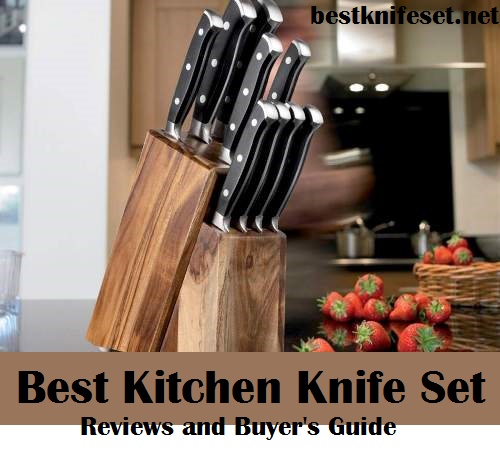What You Need To Know About Kitchen Knives
Ask anyone who spends a lot of time cooking and they’ll tell you that kitchen knives are one of the most important tools in the kitchen. They are a tool that is used on a daily basis, and it’s important that you have a good set. While most people know a little bit about these important tools, they usually don’t know everything they need to prior to shopping around for a new set. The information contained in this article will properly prepare you to navigate the sometimes confusing world of kitchen knives.
Components
No two knives are the same, but there are some components that every knife has in common. I’m not going to insult you by explaining what the blade and the handle are, as I’m sure you already know these two critical components. What a lot of people don’t know is the individual components of the blade and handle and how they affect usability and durability.
Let’s start with the blade, since it has less components. Most blades consist of two parts, the tang and the blade itself. The blade is the part of the knife you can see, and it usually has one dull side (called the spline) and one sharp side. Most good cutlery will have a bolster between the handle and the blade. The bolster is a thick section that helps with balancing and protects your fingers if your hand slips down towards the cutting edge.
The tang is the section of the blade that extends into the handle. The better sets usually have a “full tang,” meaning the tang extends to the end of the handle. This ensure the blade is optimally balanced to the handle and is preferred over a tang that only extends partially into the handle of the knife. The rivets in the handle are usually attached to the tang. You ideally want three rivets holding things together, as this will ensure a tight fit and will reduce the chance of gaps that food can get stuck in.
Handles can be made of a variety of materials. Wood was the material of choice for many years, but has fallen out of favor recently. Stainless steel and polyresin are the materials that are currently being used. Steer clear of the cheaper sets with plastic handles as they tend to chip and break easily. Because of this you’ll often see articles and reviews telling people to steer clear of all plastics. While this is good advice if you plan on spending less than $100 on a set, it simply isn’t good advice when you get into the more expensive sets. The more expensive sets that use proprietary blends of polymers are usually much better, and they don’t have the same problems as the cheaper ones. The handles on these kitchen knives are usually lighter and more ergonomic, so if your hand tire easily, you may want to consider a set with a polyresin handle.
Stamped, Forged or Sintered
There are three ways a kitchen knife can be made: stamping, forging or sintering. There are quality sets made using all three methods, but stamped knives are generally thought of to be inferior in quality since most of the cheaper sets are made by stamping.
Stamped cutlery is cut from a roll of metal, similar to how cookies are cut from dough using a cookie cutter. The roll of steel is slowly run down an assembly line, and the shape of the blade and tang is cut from the roll. It is then ground down to the exact shape and the handle is attached to the tang. Stamped knives don’t have bolsters, and they often don’t have a full tang. The smaller tang is often attached to the handle using epoxy instead of rivets, making it less durable and more prone to failure than a handle with rivets.
Forged kitchen knives are made by heating up a steel blank, then hammering it into shape in a manner similar to how swords were made in medieval times. It’s all done by machines now, but the method through which it is pounded out is similar in concept. Forged products usually feature a thick bolster and are heavier than those that are stamped from a roll of metal.
Sintering is a manufacturing process through which the blade and tang–and sometimes the bolster–are all fused together. This is usually done as a cost-saving measure, but is used by at least one high-end company to create a blade and knife combination that is truly unique in look and feel. Ultimately, quality kitchen cutlery can be made using all three methods, and it comes down to personal preference as to which type of kitchen knives you want to buy.
Learn About the Various Sets of Kitchen Knives
Finding a good kitchen knife set isn’t a problem, it’s deciding which brand of kitchen knives to buy that’s tough. Go to the best knife set section of this site or click on one of the manufacturers in the sidebar for more information. Alternatively, you can click on the banner below to go straight to Amazon to find out what customers are saying about the various brands of knives available.
